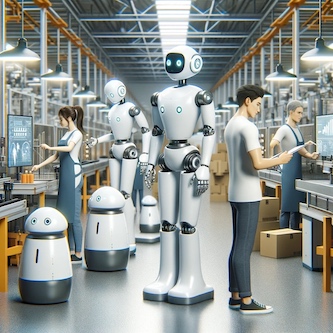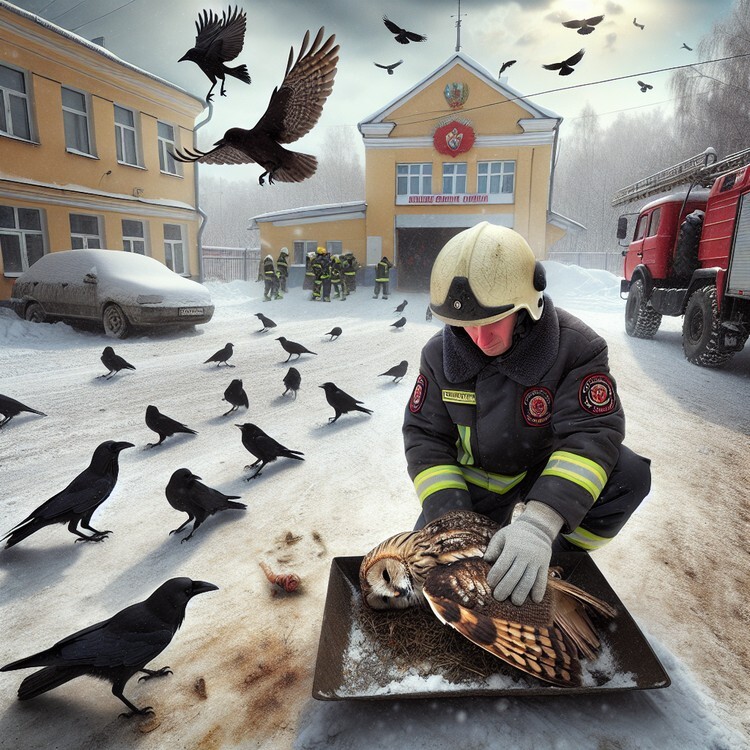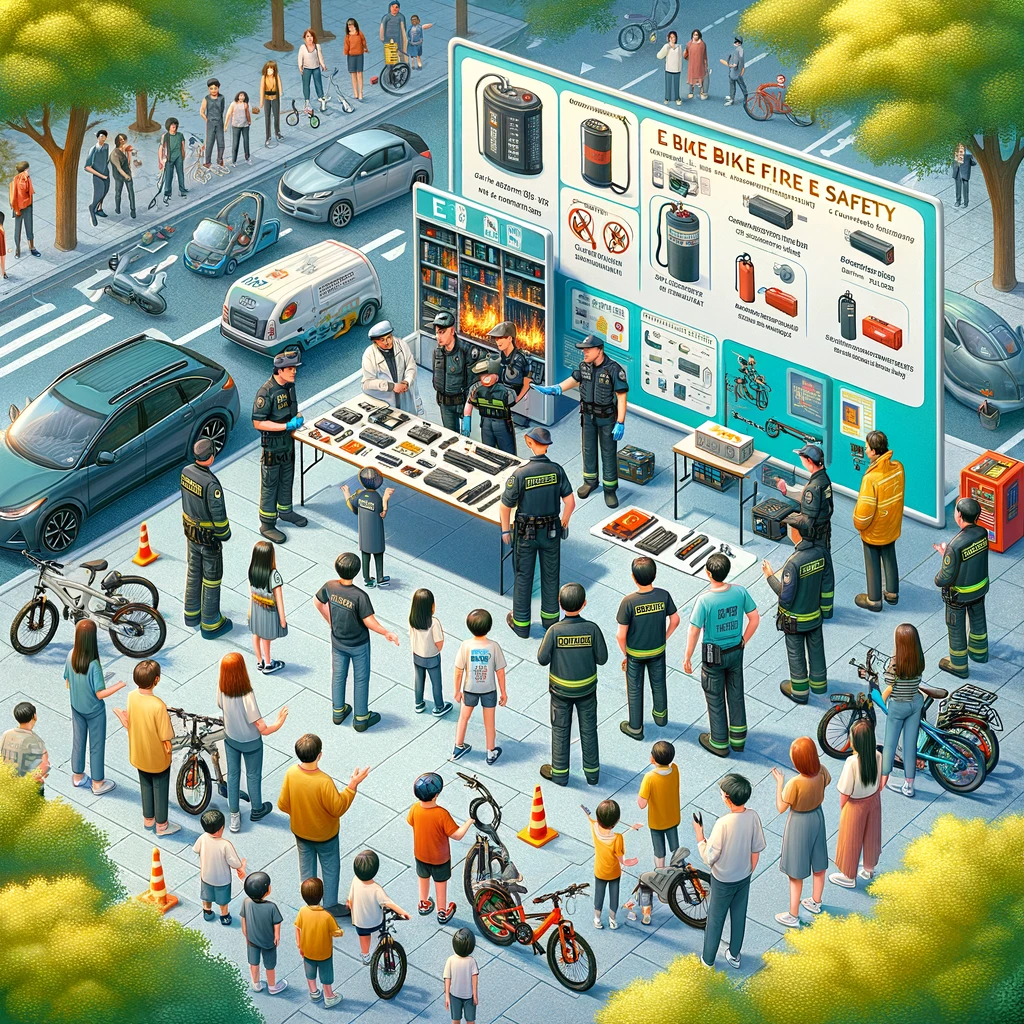Factories are using smart machines to work better and make fewer mistakes. A company that makes drinks, called PepsiCo, uses smart sensors to check if their machines are working right. These sensors help workers fix machines before they break. Smart cameras also help find tiny mistakes in things like computer parts that people might not see.
Smart machines help us know more about how things are made and moved from place to place. They can guess when a machine will need fixing and can find mistakes in things we make. These smart machines are becoming normal in factories. They also help factories share space and let people know more about where things come from.
Smart machines are changing how we make things. They help find problems in machines and in the things we make. They also help us know more about where things come from. Some people worry about jobs, but these smart machines can also help keep workers safe and help them do their jobs better.
Original news source: How factories are deploying AI on production lines (BBC)
Listen
Slow
Normal
Fast
Group or Classroom Activities
Warm-up Activities:
– News Reporter Role-play
Instructions: Students pair up and one student plays the role of a news reporter while the other is an expert on smart machines in factories. The reporter asks questions about how smart machines are used in factories, their benefits, and their impact on workers. They should use information from the article to make their interview as realistic as possible.
– Vocabulary Pictionary
Instructions: Write down key vocabulary from the article on slips of paper (e.g., smart machines, sensors, cameras, factories, jobs, etc.). Students take turns drawing the words on the board without writing any letters or words, while their classmates guess the vocabulary. This will help reinforce understanding of the article’s content and key terms.
– Opinion Spectrum
Instructions: Create a line in the classroom representing a spectrum of opinions about the use of smart machines in factories, from “very positive” to “very negative.” Read statements from the article or related to the topic and ask students to stand at the point in the spectrum that represents their opinion. Then, have students discuss their positions in small groups.
– Sketch It
Instructions: Ask students to draw a simple sketch that represents the concept of a smart factory with machines, sensors, and workers. After they have completed their drawings, students should share their sketches with a partner and explain how each element relates to the article and the importance of each component in a modern factory setting.
– Think-Pair-Share
Instructions: Pose a question to the class, such as “How do smart machines improve the manufacturing process?” or “What are the potential downsides of using smart machines in factories?” Give students a moment to think individually, then have them pair up to discuss their thoughts. Finally, bring the class back together and have pairs share their ideas with the whole group.
Comprehension Questions:
1. What do smart sensors in factories help workers do?
2. What kind of company is PepsiCo and what do they use smart sensors for?
3. How do smart cameras help in factories?
4. What can smart machines guess about other machines?
5. Why are smart machines becoming normal in factories?
6. What are two things smart machines help us understand better?
7. What do some people worry about when it comes to smart machines in factories?
Go to answers ⇩
Listen and Fill in the Gaps:
Factories are using smart machines to work better and make (1)______ mistakes. A company that (2)______ drinks, called PepsiCo, uses smart sensors to check if their machines are working right. These sensors (3)______ workers fix machines before they break. Smart cameras also help find tiny mistakes in things like (4)______ parts that people might not see.
Smart (5)______ help us know (6)______ about how things are made and moved from place to place. They can guess when a machine will need fixing and can find mistakes in things we (7)______. These smart machines are becoming normal in factories. They also help factories share (8)______ and let people (9)______ more about where things come from.
Smart machines are changing how we make things. They help (10)______ problems in machines and in the things we make. They also help us know more about where things come from. Some people worry about (11)______, but these smart machines can also help keep workers (12)______ and help them do their jobs better.
Go to answers ⇩
Discussion Questions:
Students can ask a partner these questions, or discuss them as a group.
1. What is a smart machine?
2. Do you like the idea of smart machines helping in factories? Why or why not?
3. How would you feel if a smart machine helped you with your homework?
4. Do you think smart machines can make mistakes? Why or why not?
5. Have you ever seen a smart machine? What did it do?
6. Why do you think machines need to be fixed before they break?
7. What is a sensor? Can you think of a sensor you have used?
8. Do you think smart cameras are good at finding mistakes? Why?
9. Would you like to work with smart machines? Why or why not?
10. Do you think smart machines can help keep workers safe? How?
11. Are you worried that smart machines might take people’s jobs? Why or why not?
12. Do you think knowing where things come from is important? Why?
Individual Activities
Vocabulary Meanings:
Match each word to its meaning.
Words:
1. factories
2. smart machines
3. sensors
4. mistakes
5. cameras
6. guess
7. normal
8. share
Meanings:
(a) Devices that take pictures or videos
(b) Make a prediction or estimate
(c) Places where things are made
(d) To divide or give a part of something to others
(e) Devices that can detect and measure things
(f) Errors or wrong things that happen
(g) Something that is usual or common
(h) Machines that can think and learn
Go to answers ⇩
Multiple Choice Questions:
1. What are smart machines helping factories do?
(a) Increase production costs
(b) Work better and make fewer mistakes
(c) Reduce worker safety
(d) Slow down production
2. What does PepsiCo use smart sensors for?
(a) To increase production time
(b) To find mistakes in computer parts
(c) To check if their machines are working right
(d) To fix machines after they break
3. What do smart cameras help find?
(a) Big mistakes in things like computer parts
(b) Tiny mistakes in things like computer parts
(c) Mistakes in machines
(d) Mistakes in drinks
4. What do smart machines help us know more about?
(a) How to fix machines
(b) How to make fewer mistakes
(c) How things are made and moved from place to place
(d) How to increase production time
5. What can smart machines guess?
(a) When a machine will need fixing
(b) How to make things faster
(c) How to make things cheaper
(d) How to make fewer mistakes
6. What are smart machines becoming in factories?
(a) Obsolete
(b) Dangerous
(c) Expensive
(d) Normal
7. What do smart machines help factories do?
(a) Increase production costs and reduce worker safety
(b) Slow down production and make more mistakes
(c) Fix machines after they break
(d) Share space and let people know more about where things come from
8. What can smart machines help workers do?
(a) Do their jobs better and keep them safe
(b) Increase production time and reduce worker safety
(c) Make fewer mistakes and increase production costs
(d) Slow down production and find mistakes in machines
Go to answers ⇩
True or False Questions:
1. Smart cameras cannot find small mistakes in computer parts that people might miss.
2. Some people worry about job loss, but smart machines can also keep workers safe.
3. They don’t help factories share space and provide information about where things come from.
4. PepsiCo does not use smart sensors to check if their machines are working properly.
5. Smart machines help us understand how things are made and moved.
6. Smart machines are becoming common in factories.
7. Smart machines help workers fix machines and improve the quality of the things they make.
8. These machines cannot predict when a machine will need fixing.
Go to answers ⇩
Write a Summary:
Write a summary of this news article in two sentences.
Check your writing now with the best free AI for English writing!
Writing Questions:
Answer the following questions. Write as much as you can for each answer.
Check your answers with our free English writing assistant!
1. What do smart sensors do in the drink company, PepsiCo?
2. How do smart cameras help in factories?
3. Why are smart machines becoming common in factories?
4. What are two things smart machines can do to help us?
5. What are some people worried about with smart machines in factories?
Answers
Comprehension Question Answers:
1. What do smart sensors in factories help workers do?
Smart sensors help workers find problems with machines and fix them before they break.
2. What kind of company is PepsiCo and what do they use smart sensors for?
PepsiCo is a company that makes drinks. They use smart sensors to make sure their machines are working properly.
3. How do smart cameras help in factories?
Smart cameras help by finding small mistakes in things like computer parts that people might not notice.
4. What can smart machines guess about other machines?
Smart machines can guess when a machine will need to be fixed.
5. Why are smart machines becoming normal in factories?
Smart machines are becoming normal because they help find problems and understand how things are made and moved.
6. What are two things smart machines help us understand better?
Smart machines help us understand how things are made and where they come from.
7. What do some people worry about when it comes to smart machines in factories?
Some people worry about jobs, but smart machines can also keep workers safe and help them do their work better.
Go back to questions ⇧
Listen and Fill in the Gaps Answers:
(1) fewer
(2) makes
(3) help
(4) computer
(5) machines
(6) more
(7) make
(8) space
(9) know
(10) find
(11) jobs
(12) safe
Go back to questions ⇧
Vocabulary Meanings Answers:
1. factories
Answer: (c) Places where things are made
2. smart machines
Answer: (h) Machines that can think and learn
3. sensors
Answer: (e) Devices that can detect and measure things
4. mistakes
Answer: (f) Errors or wrong things that happen
5. cameras
Answer: (a) Devices that take pictures or videos
6. guess
Answer: (b) Make a prediction or estimate
7. normal
Answer: (g) Something that is usual or common
8. share
Answer: (d) To divide or give a part of something to others
Go back to questions ⇧
Multiple Choice Answers:
1. What are smart machines helping factories do?
Answer: (b) Work better and make fewer mistakes
2. What does PepsiCo use smart sensors for?
Answer: (c) To check if their machines are working right
3. What do smart cameras help find?
Answer: (b) Tiny mistakes in things like computer parts
4. What do smart machines help us know more about?
Answer: (c) How things are made and moved from place to place
5. What can smart machines guess?
Answer: (a) When a machine will need fixing
6. What are smart machines becoming in factories?
Answer: (d) Normal
7. What do smart machines help factories do?
Answer: (d) Share space and let people know more about where things come from
8. What can smart machines help workers do?
Answer: (a) Do their jobs better and keep them safe
Go back to questions ⇧
True or False Answers:
1. Smart cameras cannot find small mistakes in computer parts that people might miss. (Answer: False)
2. Some people worry about job loss, but smart machines can also keep workers safe. (Answer: True)
3. They don’t help factories share space and provide information about where things come from. (Answer: False)
4. PepsiCo does not use smart sensors to check if their machines are working properly. (Answer: False)
5. Smart machines help us understand how things are made and moved. (Answer: True)
6. Smart machines are becoming common in factories. (Answer: True)
7. Smart machines help workers fix machines and improve the quality of the things they make. (Answer: True)
8. These machines cannot predict when a machine will need fixing. (Answer: False)
Go back to questions ⇧













